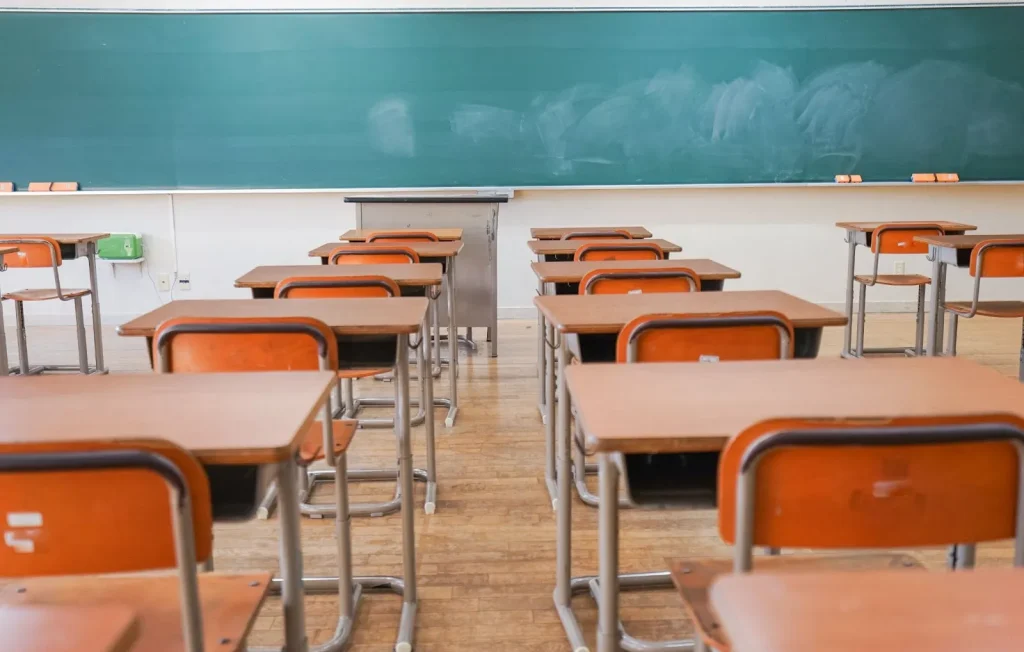How does the Japanese education system work? Explanation of types of schools, ages to attend, etc.

For foreign residents or students with children who have come to live in Japan, it is important to understand how the Japanese educational system works, but there may be times when you are confused by the differences from your home country.
Therefore, in this article, we will explain the characteristics of the Japanese education system, the types of schools, and the ages at which they are attended, in a concrete manner that is easy for foreign residents to understand. We hope that you will grasp the overall picture of the Japanese education system and find it useful in planning your child's education and life as a foreign student in Japan.
▼Goandup Picks Click here for recommended articles!
- Required before studying abroad! Goandup Nihongo+, an online Japanese language learning service
- This page introduces services for foreigners who wish to study in Japan or improve their Japanese language skills to learn Japanese online.
- Goandup Salon" community for foreigners living in Japan
- We introduce an online community where foreigners living in Japan can exchange information and interact with each other to support their life in Japan.
- Goandup Study" supports foreigners who want to study in Japan.
- This section introduces study abroad support services that provide comprehensive support to foreigners who wish to study in Japan, from preparation for study abroad to living in Japan.
- Where can I buy a prepaid SIM in Japan? Recommended SIM cards for foreigners are also introduced.
- How to purchase a prepaid SIM and suitable SIM cards for foreigners.
- The Complete Guide to Pocket Wi-Fi in Japan for Foreigners!
- We introduce how to select and recommend pocket Wi-Fi products that can be used conveniently in Japan.
- The Complete Guide to Finding a Job in Japan! Finding a job, changing jobs, and part-time work for foreigners
- This site provides foreigners who want to work in Japan with comprehensive information on how to find a job, recommended job sites, and other information necessary to find a job.
Structure of the Japanese Primary and Secondary Education Institutions System

The Japanese educational system is divided into elementary and secondary educational institutions. Primary education institutions include kindergartens, nursery schools, and elementary schools, while secondary education institutions include junior high schools and high schools. Let's take a closer look at the characteristics of each school and how the system works.
1. types of schools in Japan: explanation up to high school
School in Japan begins with kindergarten and nursery school and progresses to elementary school, junior high school, and high school. Compulsory education lasts for 9 years from elementary to junior high school, but most students go on to senior high school. Below are specific descriptions of each school's characteristics, educational content, and length of schooling.
(1) Kindergarten and nursery school
Kindergartens and preschools are the earliest educational institutions in Japan's schooling system. Kindergartens are primarily for children between the ages of 3 and 6, while preschools take care of children between the ages of 0 and 6. Kindergartens focus on developing social and communication skills through play.
On the other hand, preschools take care of children from families that need childcare, such as dual-income families, and provide childcare services in addition to early childhood education. The schooling period for kindergartens is usually three years, while preschools take care of children between the ages of 0 and 6, so the schooling period depends on the age of the child.
For more information about the annual events of Japanese kindergartens and the more detailed system, see "What is the kindergarten system in Japan? How it works and annual eventsPlease also refer to the article "The
(2) Elementary School
Elementary school is the beginning of compulsory education in Japan and covers children between the ages of 6 and 12, with six years of schooling. In elementary school, children study a wide range of subjects, including Japanese, arithmetic, science, social studies, music, arts and crafts, home economics, and physical education. In addition, a classroom teacher system is adopted, with one teacher in charge of each major subject, providing support not only for the children's learning but also for their daily lives.
Elementary schools focus on developing social skills, communication skills, and independence, along with mastery of academic content.
(iii) Junior High School
Junior high school is the educational institution responsible for the second three years of compulsory education; it is open to students between the ages of 12 and 15, and the schooling period is three years. Students begin to study more specialized subjects than in elementary school, including Japanese, mathematics, science, social studies, English, music, art, health and physical education, and technology and home economics. Students are taught by teachers who specialize in their respective subjects.
In addition to deepening students' understanding of the content of their studies, the middle school aims to foster an independent learning attitude and the ability to think logically and make good decisions. The school also focuses on club activities, providing students with opportunities to develop their individuality and abilities through sports and cultural activities.
4) High School
High school is an educational institution for students who have completed compulsory education and are between the ages of 15 and 18. As a rule, students attend high school for three years, but in the case of a regular or correspondence high school, students may take four years to graduate. In high school, more specialized subject studies are offered, and students can choose subjects according to their interests and career paths. Major subjects include Japanese, mathematics, science, social studies, foreign languages, the arts, and physical education. In high school education, emphasis is placed on developing a deep understanding of the content of study and a proactive attitude toward learning. The school also focuses on career guidance and supports students in their choice of college or career path according to their aptitudes and desires.
In addition to full-time regular high schools, there are many other types of high schools, including high schools with specialized departments, credit high schools, correspondence high schools, and advanced vocational schools (konin). These high schools offer a variety of learning styles and educational content to suit students' interests and objectives.
For more information on Japan's high school education system, seeEasy to understand for foreigners! The Japanese high school education system and high schools where you can study abroadPlease check out the article "The first two articles" for a more detailed explanation.
2. school year and age in Japan
The Japanese school year begins in April and ends in March of the following year. For this reason, children born between April 2 and April 1 of the following year will study as the same grade.
The grades from elementary through high school and the approximate ages of the students enrolled in each grade are as follows
| grade in school | age |
| First grade of elementary school | 6-7 years old |
| 2nd grade elementary school | 7-8 years old |
| 3rd grade elementary school | 8-9 years old |
| 4th grade elementary school | 9-10 years old |
| Fifth grade elementary school | 10-11 years old |
| 6th grade elementary school | 11-12 years old |
| 1st year junior high school student | 12-13 years old |
| Second year junior high school student | 13-14 years old |
| 3rd year junior high school student | 14-15 years old |
| First-year high school student | 15-16 years old |
| High school sophomore | 16-17 years old |
| High School Senior | 17-18 years old |
Elementary, junior high, and high schools have three semesters, while universities have two semesters. 3 semesters are from April to July, from September to December, and from January to March. The first semester for universities is from April to September, and the second semester is from October to March of the following year.
However, if a child transfers from overseas or temporarily leaves school in Japan to study abroad, the school year and age may not match. Also, since the division of grades may differ from country to country, some children may be confused by the difference in grades between their home country and Japan. In such cases, we recommend that you consult with the school's teachers or counselors to transfer the child to the appropriate grade level and to receive academic support.
3. class hours and timetable of Japanese schools
Class hours in Japanese elementary, junior high, and high schools are generally as follows
- Elementary school: 45-minute class
- Junior high school and high school: 50-minute classes
- University: 90-minute class
However, there are some differences among schools. For example, some high schools have introduced 60- or 90-minute classes in order to emphasize learning for university entrance exams.
Classes are held Monday through Friday, with Saturday and Sunday off as a rule. However, students may attend school on holidays for school events.
The number of classes per day is generally six for both elementary, junior high, and high schools. Generally, four classes are held in the morning and two in the afternoon with a lunch break in between, but in the lower grades of elementary school, classes may be completed in five sessions.
4. club activities in Japanese schools
Japanese junior high and high schools offer a wide variety of club activities that take place after school and on holidays. Club activities are voluntary participation based on students' interests and are intended to develop students' individuality and abilities through sports and cultural activities.
There are two main types of club activities: athletic clubs and cultural clubs. Athletic clubs engage in a variety of sports, including baseball, soccer, basketball, volleyball, tennis, track and field, kendo, and judo. On the other hand, the cultural clubs are involved in a wide range of activities such as brass band, chorus, drama, fine arts, calligraphy, flower arrangement, tea ceremony, photography, science, and computers.
Participation in club activities is not mandatory, as we respect the independence of our students. However, many students participate in club activities and enjoy a fulfilling school life while engaging in friendly competition with their peers. Through club activities, students not only hone their professional skills, but also develop a sense of responsibility, cooperation, leadership, and other social skills.
5. types of teachers in Japanese schools
Japanese schools have teachers who serve in a variety of roles. This section describes the main types of teachers and their roles.
(1) President, Rector, Principal
The president (souchou) of a university, the president (gakuchou) of a university or junior college, and the principal (kouchou) of an elementary, junior high, or senior high school are responsible for the overall management and administration of the school. The principal or "head teacher" in English is responsible for determining educational policy, supervising teachers and staff, and liaising with parents and the local community. The president, rector, and principal are appointed by the president of the school, who has extensive teaching experience and excellent leadership and administrative skills.
(2) Vice President, Vice President, etc.
A vice president (fukugakuchou) assists the principal or president of a university or junior college and is in charge of school administration. Their main responsibilities include creating timetables, planning and implementing various events, and coordinating the work assignments of teachers and staff. Vice-principals and vice-presidents are also appointed by the president, who has extensive teaching experience and strong administrative skills.
(iii) Teachers/teaching staff
Teachers (kyouin) or kyouyu (kyouyu) provide academic instruction and student guidance at elementary, junior high, and high schools. Elementary schools generally have a classroom teacher system, while junior high and high schools generally have a subject teacher system. Classroom teachers are responsible for a single class and are in charge of the students' academic and daily lives. Subject homeroom teachers are in charge of specific subject classes and use their subject expertise to improve students' academic performance.
At universities, professors, associate professors, lecturers, and assistant professors are enrolled as faculty members and conduct education and research in their specialized fields.
School counselor, nutrition teacher, etc.
School counselors deal with psychological problems of students. Their main responsibilities include counseling students and advising parents and teachers. School counselors are required to have specialized knowledge in psychology and counseling skills.
Nutrition teachers are responsible for managing school lunches and promoting nutrition education. Their main responsibilities include preparing school lunch menus, teaching cooking, and providing guidance on food-related issues. Nutrition teachers are required to have expertise in nutrition and a passion for nutrition education.
Other teachers with various specialties include a school nurse who takes care of students' health, a school librarian who manages the school library, and a special needs teacher who is in charge of teaching students with special needs.
Duration of Study at Japanese Institutions of Higher Education and Degrees to be Obtained

Institutions of higher education in Japan include universities, graduate schools, junior colleges, technical colleges, and professional training colleges. Each institution offers different lengths of study and different degrees.
This section details the characteristics of each institution of higher education, the length of study, and the degrees that can be earned.
1. duration of university study and degrees
Universities are institutions of higher education that provide academic teaching and research. Undergraduate education is designed to provide students with basic knowledge and skills in specialized fields and a broad range of liberal arts.
As a general rule, the period of study at a university is 4 years, but for some faculties, such as medicine, dentistry, pharmacy, and veterinary medicine, it is 6 years. The period of study may also be extended due to circumstances such as transfer or study abroad, and students may be enrolled for up to 8 years at a 4-year university and up to 12 years at a 6-year university.
Upon graduation from a university, students are awarded a bachelor's degree (Bachelor of Arts). The type of bachelor's degree depends on the field of study. For example, a bachelor's degree in engineering is a bachelor's degree in engineering, while a bachelor's degree in economics is a bachelor's degree in economics.
2. duration of graduate study and degrees
Graduate schools are educational institutions for further advanced academic research after graduation. Graduate schools are divided into master's programs (master's course) and doctoral programs.
The master's program is the first semester of graduate study and, as a rule, lasts two years. Upon completion of the master's program, students are awarded a master's degree (master's degree). The type of master's degree also depends on the field of study.
The Doctoral Course is the second semester of a graduate school program, and the period of study is three years in principle. Upon completion of the Doctoral Course and successful defense of the doctoral dissertation, students are awarded the degree of Doctor of Philosophy (Doctor of Philosophy).
Some graduate schools offer a five-year doctoral program that combines a master's degree and a doctoral degree.
3. duration of study and degrees at junior colleges
Junior colleges are institutions of higher education that offer practical education, and the length of study is generally two or three years. Upon graduation from a junior college, students are awarded a junior college degree (associate degree).
Junior colleges offer a variety of specialized fields, including early childhood education, nursing, nutrition, cosmetology, and business, where students can acquire specialized knowledge and skills in two years and enter the workforce immediately.
4. duration of study and degree from a vocational school
Vocational schools are educational institutions that offer practical education in a specific vocational field. The length of study varies by field, but most last from two to three years.
Vocational schools do not confer degrees like universities because of their emphasis on vocational education. However, graduates of professional training colleges who meet certain requirements are awarded the title of professional engineer or advanced professional engineer.
Vocational schools offer a wide variety of fields, including industrial, medical, welfare, fashion, culinary, and game creator. Our practical curriculum and small-group education nurture talented individuals who are ready to work immediately.
5. duration of study and degrees from the National Defense Academy and the National Defense Medical College
The National Defense Academy and the National Defense Medical College are institutions of higher education that train personnel to become senior Self Defense Force officers.
The National Defense Academy's study period is four years, and upon graduation, students are awarded a bachelor's degree. Upon graduation, students will become a senior Self-Defense official of either the Ground, Maritime, or Air Self-Defense Forces.
The duration of study at the National Defense Medical College is six years, and upon graduation, students are awarded a bachelor's degree. Upon graduation, students are qualified to sit for the national medical examination, and after passing the examination, they undergo two years of clinical training. Upon completion of training, students will serve in Self Defense Forces hospitals and units nationwide, and are expected to be active as public health nurses and nurses, as well as executive officers of the Japan Self Defense Forces.
The National Defense Academy and the National Defense Medical College are special educational institutions that are different from ordinary universities, but provide advanced professional and military education.
Useful information and support for living in Japan

Living in Japan is fascinating, but it is not uncommon to face many challenges due to language barriers and cultural differences. For example, you may encounter difficulties in all aspects of life, from using keigo (honorific expressions) in everyday and business situations, to difficulties in finding housing, using public services, preparing for the JLPT exam, and even meeting new friends and loved ones.
At such times, Goandup Salon will be your reliable partner!
Our community provides support and information to help foreign residents in Japan to make their life in Japan richer and more comfortable.
- Japanese Language Studywill meet the needs of all levels, from daily conversation to the use of keigo in business situations, to efficient Japanese language learning methods and preparation for the JLPT exam.
- livingaspect of the program provides concrete advice and information on how to establish a foundation for living in Japan, including explanations of Japanese culture and rules, finding housing, and how to contract public services and living infrastructure.
- Jobs & CareersRegarding the "what if" section, we can help you find a job, change jobs, and understand Japanese business etiquette and workplace culture, which are key to a successful career in the workplace.
- Travel & Dining Guidewill introduce you to hidden gems in Japan, must-try gourmet information, and other unique local attractions to help you experience Japan more deeply.
If you have any questions or concerns about life in Japan, Goandup Salon is here to help you! We will wholeheartedly support you to make your life in Japan smoother and more enjoyable.
For more information, click here ▼
summary
Although the Japanese educational system is unique in some respects compared to the educational systems of other countries, it aims to draw out the potential of children and nurture human resources who can play an active role in society. Children from other countries and their parents/guardians will be able to enjoy school life with peace of mind if they understand the Japanese educational system.






